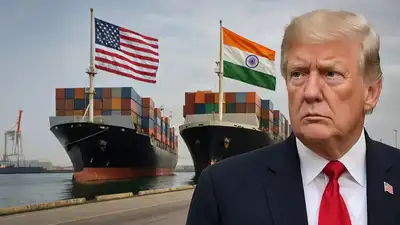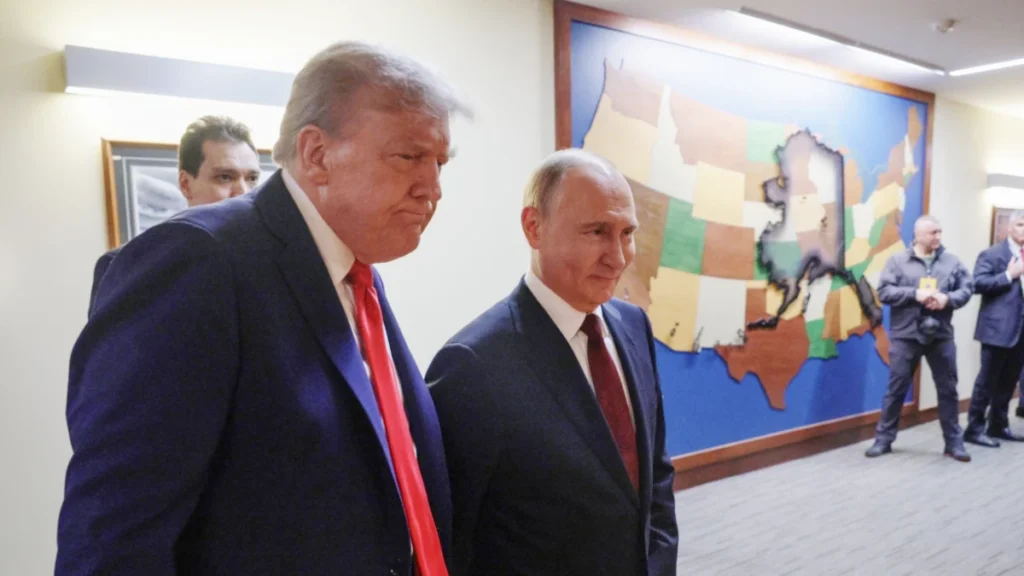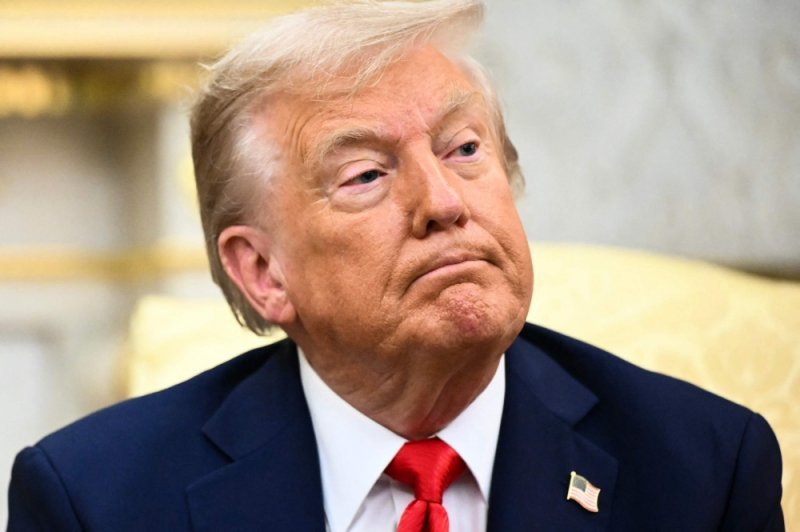
President Donald Trump’s tariff blitz is shaking the pillars of global trade and diplomacy.
President Donald Trump’s second term is turning out to be less about diplomacy and more about demolition of America’s traditional alliances. In his latest push to reassert American primacy, Trump has unleashed a new wave of tariffs-50% levies on Indian and Brazilian goods, increased duties on EU metals, and a renewed squeeze on Chinese tech exports. His advisers frame it as a “reset” of the global economic system. “The president deserves a Nobel prize in economics,” Trump aide Peter Navarro claimed, “for proving that the US can bend global commerce to its will.”But instead of bending the world into alignment, Trump’s trade war is pushing it away. “By acting as if America remains the axis of world trade, Mr Trump may be accelerating its shift elsewhere,” the Economist said in a report. The numbers back that up: in 2000, the US made up 20% of global imports; today, it’s closer to 12%, the Economist report added.Countries are responding in kind. Brazil has announced a $6 billion stimulus plan to shield its exporters. India is doubling down on its “Made in India” push. Canada and Japan are retaliating with tariffs of their own. South Korea is quietly subsidizing firms to scout opportunities in the Middle East and Latin America.As per the Economist report, most revealing is what one South Korean official said: “The first step is to make concessions to America. The second is to look elsewhere.”And increasingly, that “elsewhere” is not the West.Why it matters: China and Russia court India
- A summit between Prime Minister
Narendra Modi and Chinese President Xi Jinping is expected on August 31 in Beijing, with Russia’s tacit support. It’s the strongest signal yet that the Russia-India-China (RIC) triangle-first envisioned in the 1990s-may be coming off the shelf just as President Trump isolates America through tariffs and threats to abandon Nato. - “The rapprochement is occurring with great caution. But it’s happening, and it is happening under Russia’s watch,” The Asia Times said in a report.
- The stakes are high. The Ukraine war is dragging on, Trump’s approval among allies is faltering, and new power alignments are emerging from the vacuum.
- A RIC alignment could offer Russia strategic relief, China market expansion, and India leverage-all while undermining US influence globally.
- For Trump, the implications are stark:
- If he loses the midterms in 2026, a lame-duck presidency could open a three-year stretch of geopolitical limbo.
- If the US-led order crumbles, Trump may go down as the president who dismantled America’s global clout.
- “Even close allies are starting to question whether the US remains fully committed,” the Asia Times report said.
The big picture1. America’s allies are hedgingFor the first time in 80 years, allies like Germany, Japan, and India are seriously weighing long-term alternatives to US-centered security.From Berlin to Tokyo, from Ottawa to Seoul, leaders are starting to hedge against American unreliability. The idea that the US might walk away-not just from Afghanistan, but from Germany or Japan-is no longer far-fetched. What began as Trump’s unilateralism is now morphing into systemic doubt.Brazilian President Luiz Inácio Lula da Silva has been on the phone, rallying BRICS countries to deepen trade without the US. He’s talked to Modi about linking digital payment systems and spoken with Xi about a new round of trade expansion. “Relations with Brazil are at their best in history,” Xi declared after the call.The data tells the story: Uncle Sam now buys just 1/7 of Brazil’s exports, down from 1/4 twenty years ago. Trade between BRICS nations now exceeds trade with the US—and the gap is widening.

2. India’s pivot is strategic, not ideological
- India is not abandoning the West-but Trump’s tariffs have created space for a diplomatic reset with China. The country is now facing 50% duties on key exports, a move India sees as punishment for its Russian oil purchases.
- “Trump’s tariffs are nudging them closer,” writes Bloomberg’s Karishma Vaswani. “But what binds these nations is necessity, not trust.”
- Modi’s visit to China-the first in seven years-follows diplomatic outreach and a push to resolve border disputes, long a stumbling block in India-China relations.
Zoom in: What’s behind the RIC revival?The Russia-India-China triangle isn’t new. Moscow first floated it in the 1990s to challenge American dominance. But rivalries-especially between Beijing and New Delhi-kept it frozen.Now:• Russia is desperate for allies amid Ukraine fatigue and mounting sanctions.• China sees economic opportunity as US influence wanes.• India seeks flexibility as it absorbs US economic blows.But trust is thin• In 2020, a violent border clash in Galwan left soldiers dead on both sides.• Rare earth curbs from China threatened India’s EV sector this year.Yet the US has not made things easier. India faces higher US tariffs than China in some categories. That reversal-especially under a president once friendly to Modi-has stunned New Delhi.Between the linesThe triangle may appear strong from afar, but the fault lines are deep:• Economically, India still relies on US markets and technology. Exports to America topped $77.5B in 2024, compared to a fraction of that with Russia or China.

• Strategically, India remains wary of China’s alignment with Pakistan and its assertiveness in Taiwan and the South China Sea.• Symbolically, India still restricts Chinese tech and investment, wary of becoming too dependent.Still, PM Modi is hedging:“For its most critical technology needs… some of the country’s biggest conglomerates are quietly exploring partnerships with Chinese firms,” a Bloomberg report said.Executives from Adani Group and JSW are eyeing joint ventures with CATL, BYD, and Chery to support India’s EV ambitions, the Bloomberg report added.What they’re saying
- “It’s a marriage of convenience,” says Bloomberg’s Vaswani. “The fundamental contradictions… are unlikely to disappear soon.”
- “The implication is that America is flawed, and democracy itself is suspect,” Asia Times notes. “This narrative is gaining traction both at home and abroad.”
- Reserve Bank of India governor Sanjay Malhotra downplayed the fallout from President Trump’s tariffs, saying the impact on India will likely be limited and the central bank remains focused on growth. Speaking at the FIBAC banking conference in Mumbai, Malhotra said he was “hopeful” that trade talks between New Delhi and Washington will “play out.” He added that the effect of Trump’s tariff hikes on India would be “minimal.”
- Trump’s decision to double tariffs on Indian goods to 50%-citing New Delhi’s Russian oil imports-is seen as a moderate downside risk. “They will reduce India’s ability to benefit from supply chain shifts out of China,” Fitch Ratings said.
Prime Minister Narendra Modi on Monday issued a strong statement in support of small entrepreneurs and farmers, just days before Trump’s 50 per cent tariff on India comes into effect.“Today in the world, everyone is busy doing politics based on economic interests. From this land of Ahmedabad, I will tell my small entrepreneurs, my small shopkeeper brothers and sisters, my farmer brothers and sisters, my animal husbandry brothers and sisters and I am saying this on the land of Gandhi … be it the small entrepreneurs, farmers, or animal keepers of my country, for everyone, I promise you again and again, your interests are paramount for Modi,” he said while addressing a rally in Ahmedabad.“My government will never let any harm come to the small entrepreneurs, farmers, and animal keepers. No matter how much pressure comes, we will keep increasing our strength to withstand. Today, the Atmanirbhar Bharat Abhiyan is getting a lot of energy from Gujarat and behind this are two decades of hard work,” PM Modi said.What’s next
- India’s embassy in Washington has hired
Mercury Public Affairs LLC , a lobbying firm with deep Trump-world ties. Mercury’s connections to Trump’s circle are notable: White House Chief of Staff Susie Wiles once co-chaired Mercury, while partner Bryan Lanza – Trump’s former transition communications director – is listed on the India account, according to a separate disclosure. - August 31: Modi-Xi meeting in Beijing during the Shanghai Cooperation Organization summit. Russia is lobbying for a trilateral session.
- Sept–Dec 2025: The US midterm campaign intensifies, potentially weakening Trump further if Republicans underperform.
The bottom lineTrump’s unilateralism is reshaping the global order-but not in the way his advisers intended. Instead of forging American primacy, he’s driving allies to hedge, adversaries to align, and uncertainty to spike. While RIC may not last, the mere fact it’s being revived underscores how fluid and fragile the world has become.(With inputs from agencies)







